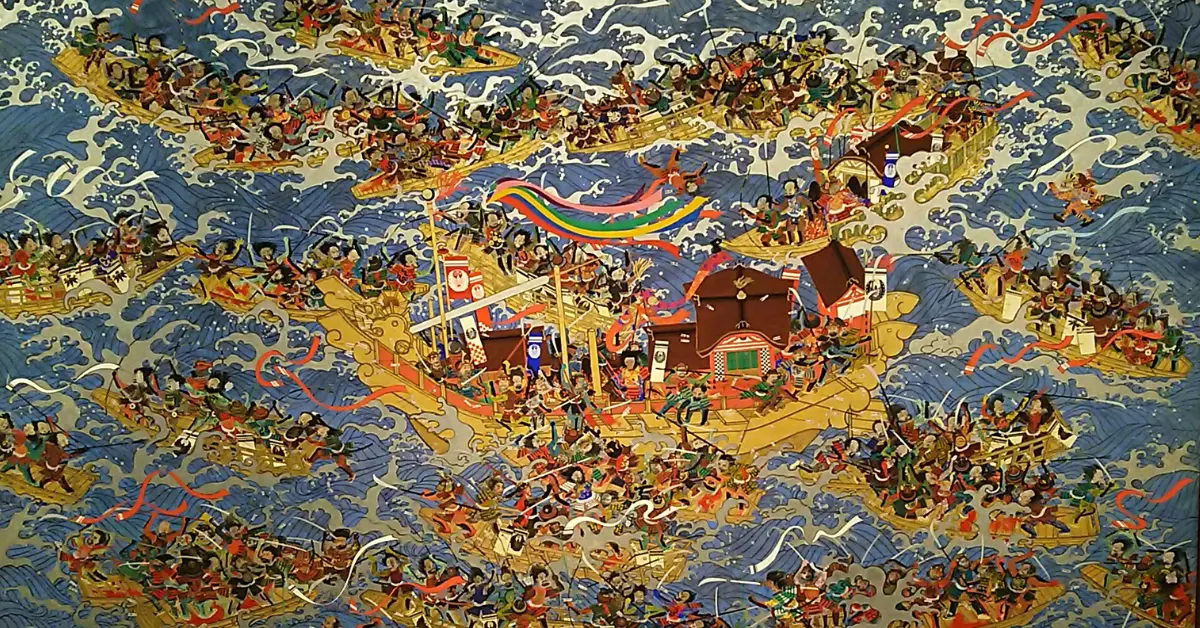The Genpei War (or Gempei War) was a national civil war between the Taira and Minamoto clans in the late Heian period, from 1180 to 1185.
The escalating tensions and power struggles within the imperial court led to a series of fierce battles, including the significant Battle of Dan-no-ura. The Minamoto’s ultimate victory led to the establishment of the Kamakura shogunate under Minamoto no Yoritomo, shifting power from court aristocracy to a military government and elevating the samurai class.
This period saw the decline of the Taira, redistribution of lands and titles among Minamoto loyalists, and significant cultural and societal shifts, including the rise of militaristic values, setting the stage for Japan’s feudal era.
Key Takeaways
- The Genpei War involved a power struggle between the Minamoto and Taira clans, catalyzed by grievances against the Taira’s dominance in the imperial court.
- Key battles, such as the Battle of Dan-no-ura, were instrumental in determining the war’s outcome. These battles showcased strategic military prowess and the valor of samurai warriors.
- The Minamoto’s victory led to the establishment of Minamoto no Yoritomo as the first Shōgun. This shifted political power from the aristocracy to the military class.
- The war had lasting cultural impacts, influencing Japanese literature, art, and the samurai ethos. It also led to the decline of the Taira clan and a reorganization of land and power among Minamoto loyalists.
- The aftermath saw significant societal changes, with the rise of the samurai class and a shift in regional power dynamics. The war’s end marked the beginning of Japan’s medieval era, characterized by feudalism and military rule.
Prelude to Genpei War
The Genpei War, also known as Genpei Kassen was primarily a power struggle between two influential clans: the Taira and the Minamoto. It was set against a backdrop of growing dissatisfaction with the Taira clan’s rule.
Under the leadership of Taira no Kiyomori, the Taira gained unprecedented control over the imperial court. Emperor Antoku’s rise to the throne, under the influence of Kiyomori, his grandfather, marked the peak of their control. This move pushed aside other possible heirs, such as Prince Mochihito.
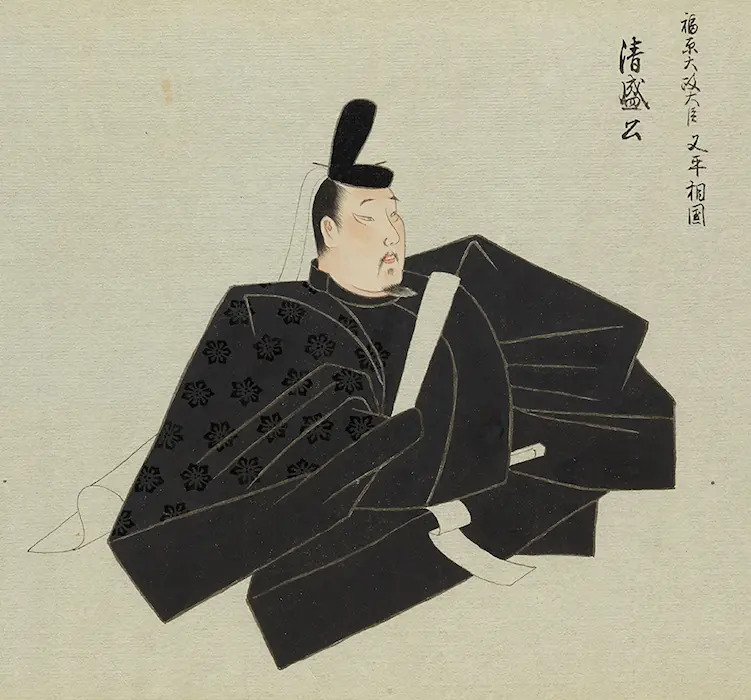
Concurrently, Minamoto no Yorimasa, a veteran warrior who, despite his age and initial loyalty to the Taira, grew increasingly disillusioned with their rule. Along with Prince Mochihito, they began to muster support for a rebellion, capitalizing on the resentment among other clans, including the Miura, Chiba, and Takeda clans, and the sōhei (warrior-monks) who were opposed to the Taira’s dominance.
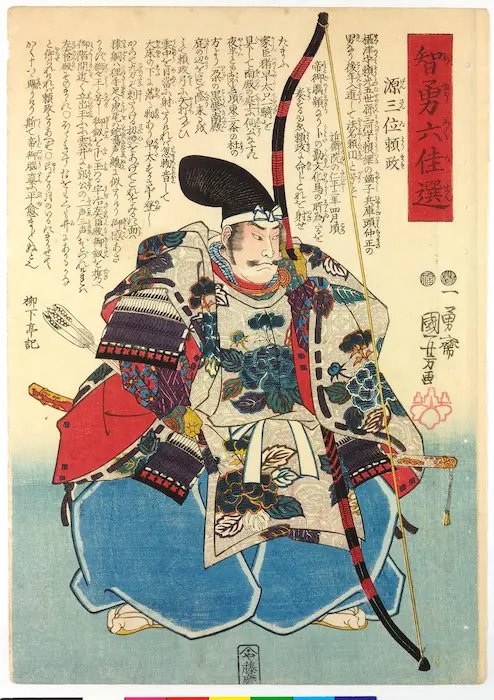
The immediate trigger for the Genpei War was a call to arms by Prince Mochihito, who denounced the Taira’s tyranny and urged the Minamoto and other dissatisfied groups to rise against them. Exiled Minamoto survivors from the Heiji Rebellion, including Minamoto no Yoritomo, joined the uprising.
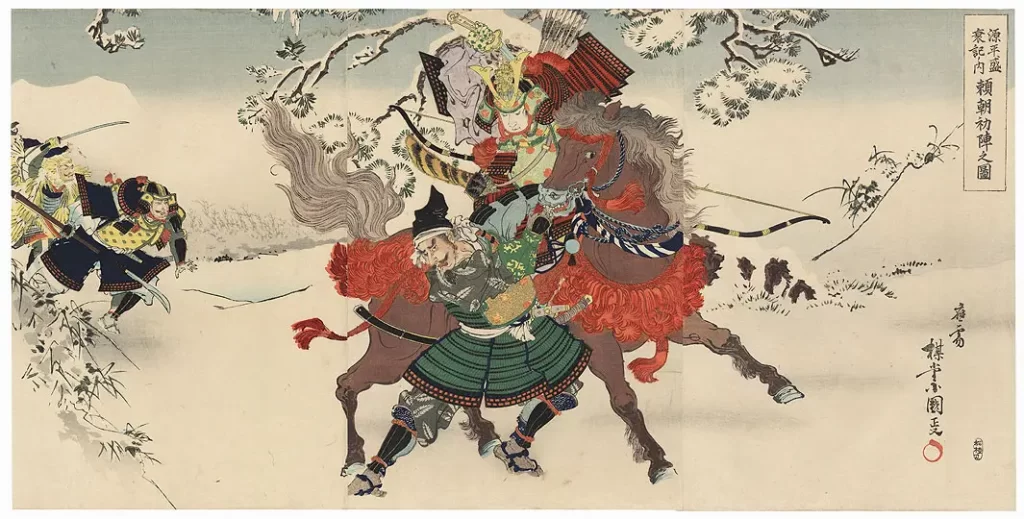
The Battles of Genpei War
The Genpei War, characterized by intense and pivotal battles, marked the struggle for supremacy between the Taira and Minamoto clans.
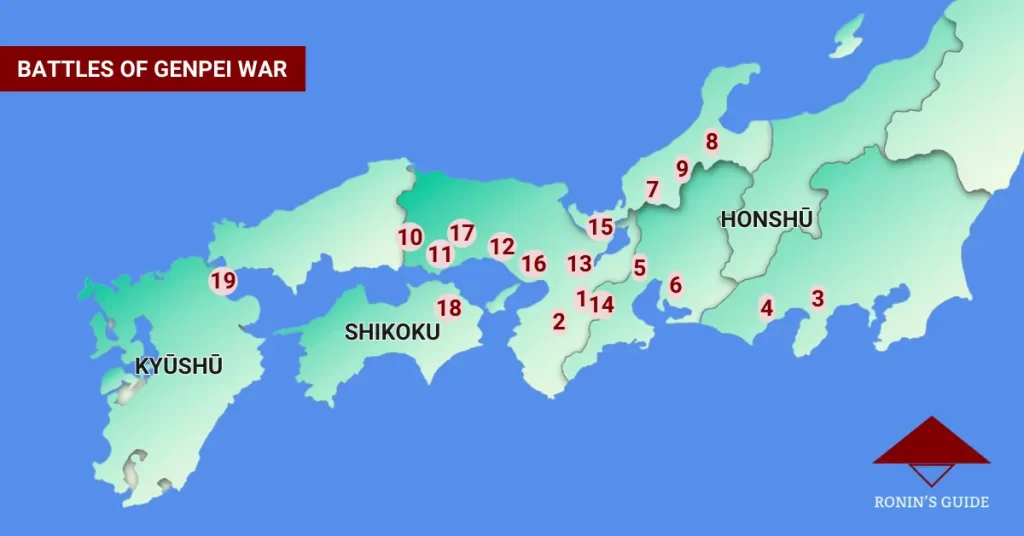
| No. | Battle | Year |
| 1 | First Battle of Uji | 1180 |
| 2 | Siege of Nara | 1180 |
| 3 | Battle of Ishibashiyama | 1180 |
| 4 | Battle of Fuji-gawa | 1180 |
| 5 | Battle of Sunomata-gawa | 1181 |
| 6 | Battle of Yahagi-gawa | 1181 |
| 7 | Siege of Hiuchi | 1183 |
| 8 | Battle of Kurikara | 1183 |
| 9 | Battle of Shinohara | 1183 |
| 10 | Battle of Mizushima | 1183 |
| No. | Battle | Year |
| 11 | Siege of Fukuryūji | 1183 |
| 12 | Battle of Muroyama | 1183 |
| 13 | Siege of Hōjūjidono | 1184 |
| 14 | Second Battle of Uji | 1184 |
| 15 | Battle of Awazu | 1184 |
| 16 | Battle of Ichi-no-Tani | 1184 |
| 17 | Battle of Kojima | 1184 |
| 18 | Battle of Yashima | 1184 |
| 19 | Battle of Dan-no-ura | 1185 |
First Battle of Uji (1180)
This initial clash set the war in motion. The Taira, pursuing the rebel forces, faced the warrior monks of Nara and Minamoto Yorimasa at Uji. Despite a valiant defense, including a memorable stand at the broken bridge of Uji, the Minamoto forces, led by the aged Yorimasa, were overpowered. Yorimasa’s honorable suicide here set a precedent for the samurai code. Prince Mochihito was captured and later executed.
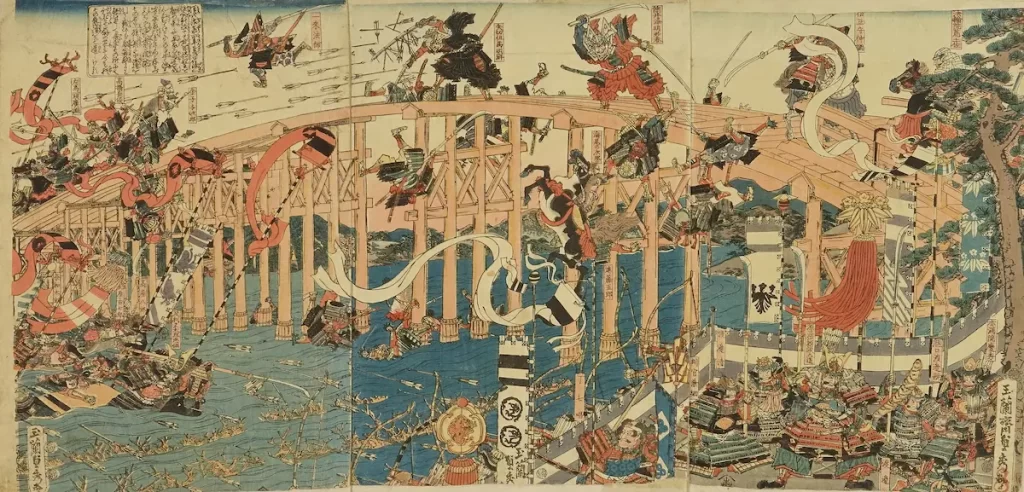
Siege of Nara (1180)
In retaliation for sōhei’s support of Minamoto forces, the Taira forces set their sights on Nara, ruthlessly burning the monasteries of Kofukuji and Todaiji. These violating acts upset the court society.
Battle of Ishibashiyama (1180)
Minamoto no Yoritomo’s initial attempt to challenge the Taira ended in defeat. The swift night attack by Taira forces under Oba Kagechika caught Yoritomo and his Miura allies by surprise, leading to a heavy loss for the Minamoto.
Battle of Fuji-gawa (1180)
The night that the two armies faced off, the Taira clan’s forces unexpectedly retreated as they were not in a good fighting condition. It was also said that a false alarm caused by a flock of waterfowl spooked the Taira who mistook the noise for a night attack.
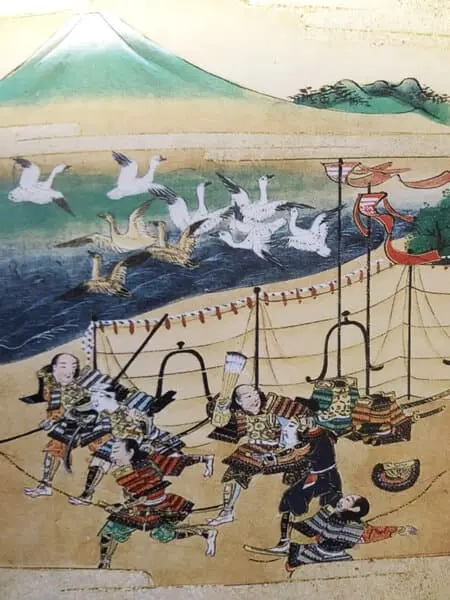
Battle of Sunomata-gawa (1181)
Taira Tomomori led a successful campaign against Minamoto no Yukiie. The Minamoto’s attempt at a surprise night attack across a river backfired, leading to a Taira victory.
Battle of Yahagi-gawa (1181)
Retreating from Sunomata, Yukiie’s defensive efforts at the Yahagi River were thwarted by the Taira, but a timely illness of Tomomori prevented further pursuit.
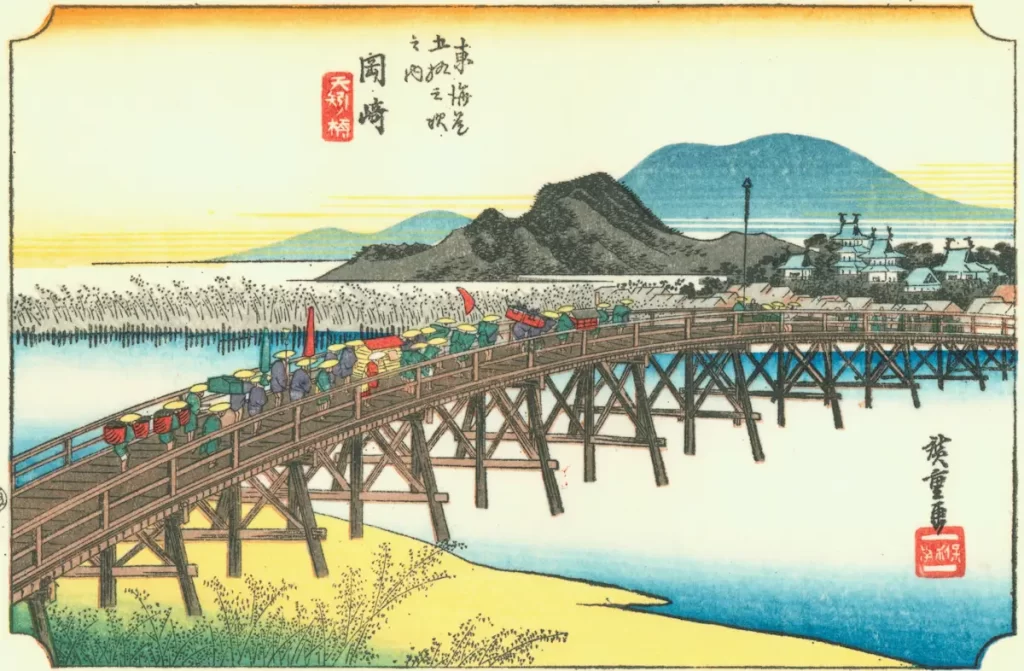
Siege of Hiuchi (1183)
The Taira, moving north, besieged Hiuchi, a Minamoto-held fortress. Despite solid defenses, including a moat, the fortress fell after a traitor revealed how to breach its defenses.
Battle of Kurikara (1183)
This battle marked a turning point in the war. Minamoto no Yoshinaka employed clever tactics, including making his army size looked bigger by displaying more white banners, and using torches attached to oxen to create chaos in the Taira ranks. These led to a significant Minamoto victory and saw the Taira fleeing Kyoto.
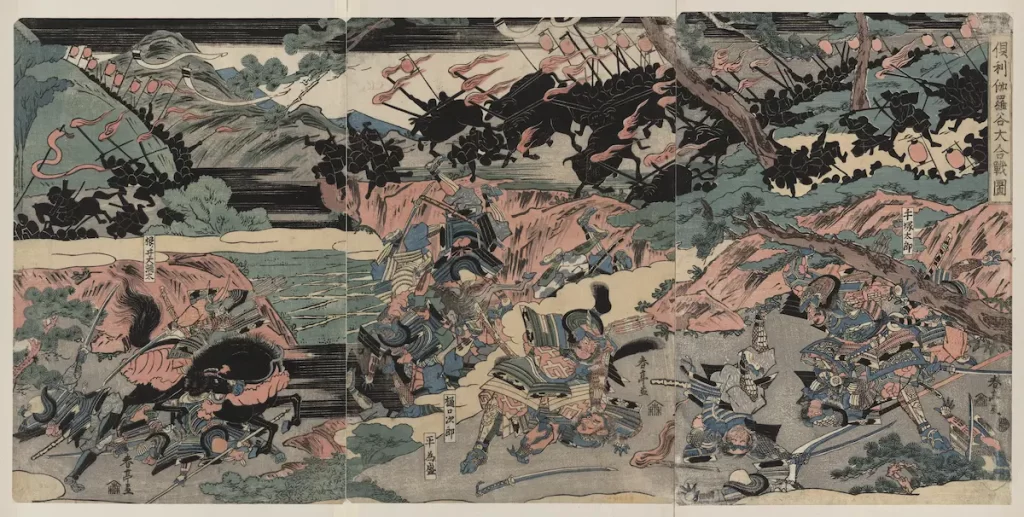
Battle of Shinohara (1183)
Minamoto no Yoshinaka caught up with the retreating Taira Munemori. The battle began with an archery duel followed by general fighting. The Minamoto clan emerged victorious.
Following the battle, Yoshinaka decided to split from the main Minamoto clan and establish his own government. This move was seen as a threat to his cousin, Yoritomo.
Battle of Mizushima (1183)
Yoshinaka continued pursuing the Taira after his occupation of the capital to an important Taira base at Yashima. However, this naval engagement saw Minamoto forces defeated at the hands of the Taira, showcasing the Taira’s naval superiority.
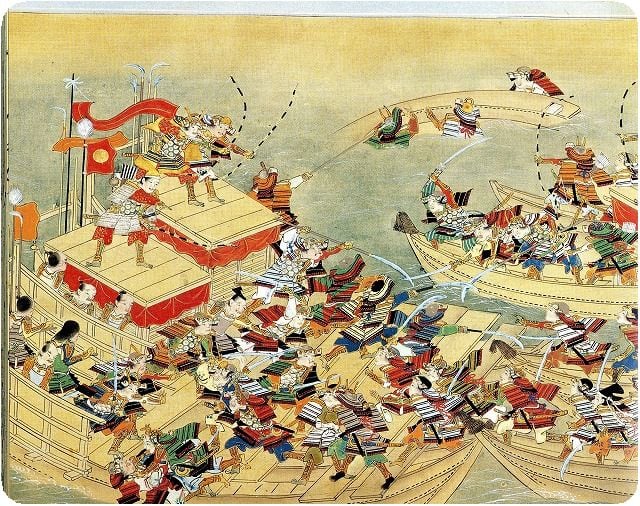
Siege of Fukuryūji (1183)
The fortress of Fukuryūji, held by Taira loyalists, fell to Minamoto forces under Imai Kanehira, in a hard-fought battle across muddy fields.
Battle of Muroyama (1183)
Here, Taira Tomomori commanded a larger force against Minamoto Yukiie. Despite initial resistance, Yukiie was eventually overwhelmed and forced to retreat.
Siege of Hōjūjidono (1184)
Minamoto Yoshinaka’s entry into Kyoto led to this siege, characterized by intense urban combat and the burning of the Hōjūjidono Palace.
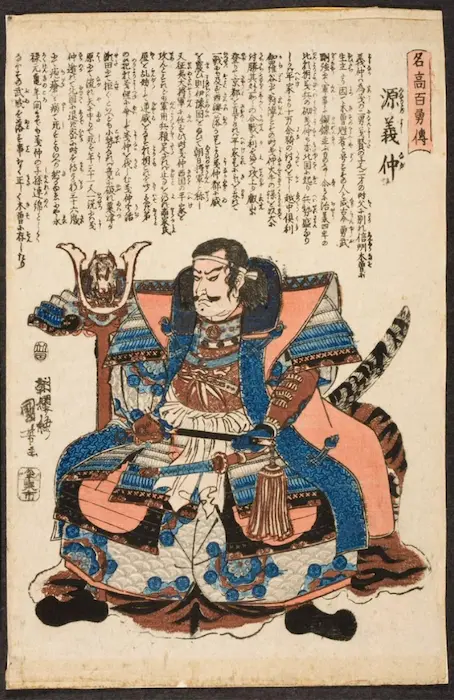
Second Battle of Uji (1184)
This second battle at Uji saw Minamoto no Yoshitsune lead an assault across the river, defeating the forces of his cousin, Yoshinaka.
Battle of Awazu (1184)
The final stand of Minamoto no Yoshinaka occurred here. Outnumbered and outmaneuvered, Yoshinaka met his end, marking the close of his chapter in the Genpei War.
Battle of Ichi-no-Tani (1184)
A major conflict near present-day Kobe, where Yoshitsune led a daring and successful assault on the Taira fortress, forcing them to flee towards the sea.
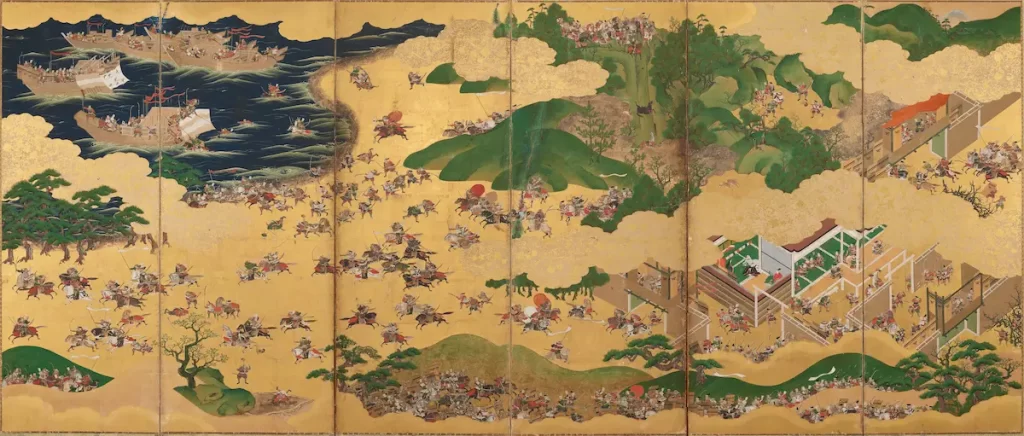
Battle of Kojima (1184)
This battle saw Minamoto Noriyori defeat a Taira force, with a notable crossing of a narrow sea strip by the Minamoto forces.
Battle of Yashima (1184)
This was another critical naval engagement. The Minamoto, attacking from land and sea, forced the Taira to flee, marked by the famous incident of Nasu Yoichi shooting a fan atop a Taira boat.
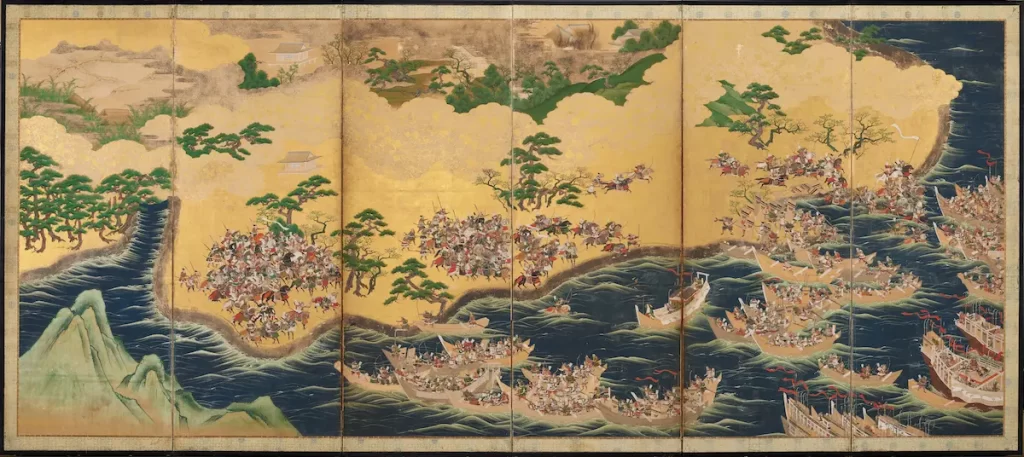
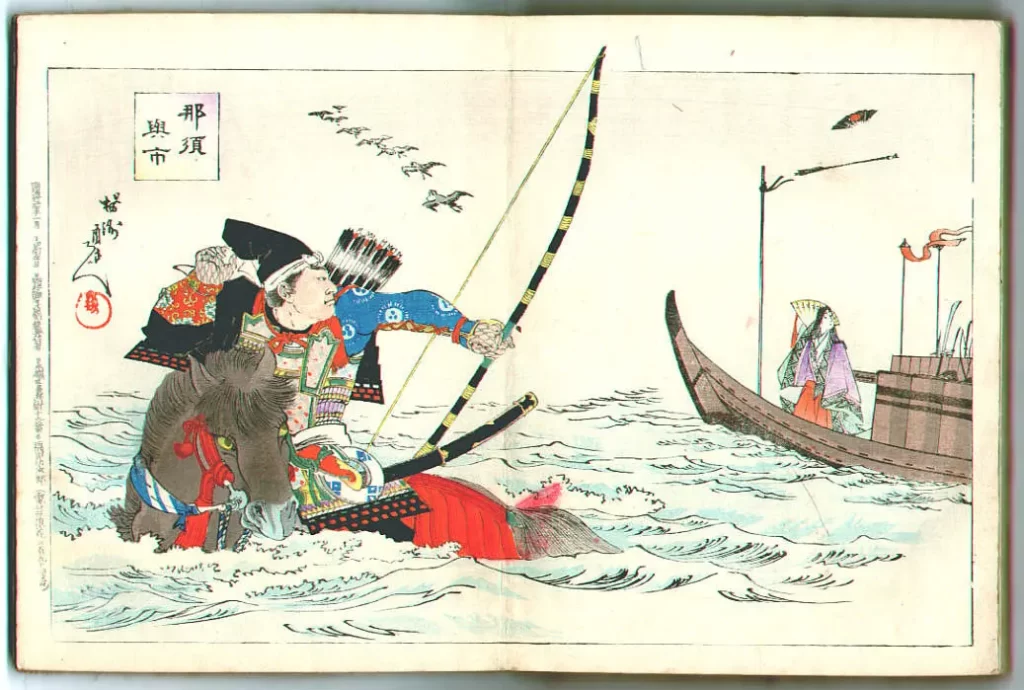
Battle of Dan-no-ura (1185)
The final and decisive conflict of the Genpei War, this naval battle saw the Minamoto, led by Yoshitsune and Noriyori, outmaneuver the Taira. The tide of battle turned literally and figuratively with the shifting tides, leading to a comprehensive Minamoto victory. Taira no Tomomori, among other Taira leaders, chose death over defeat. This battle marked the end of the Taira clan’s power and the tragic death of Emperor Antoku, solidifying the downfall of the Taira and the rise of the Minamoto.
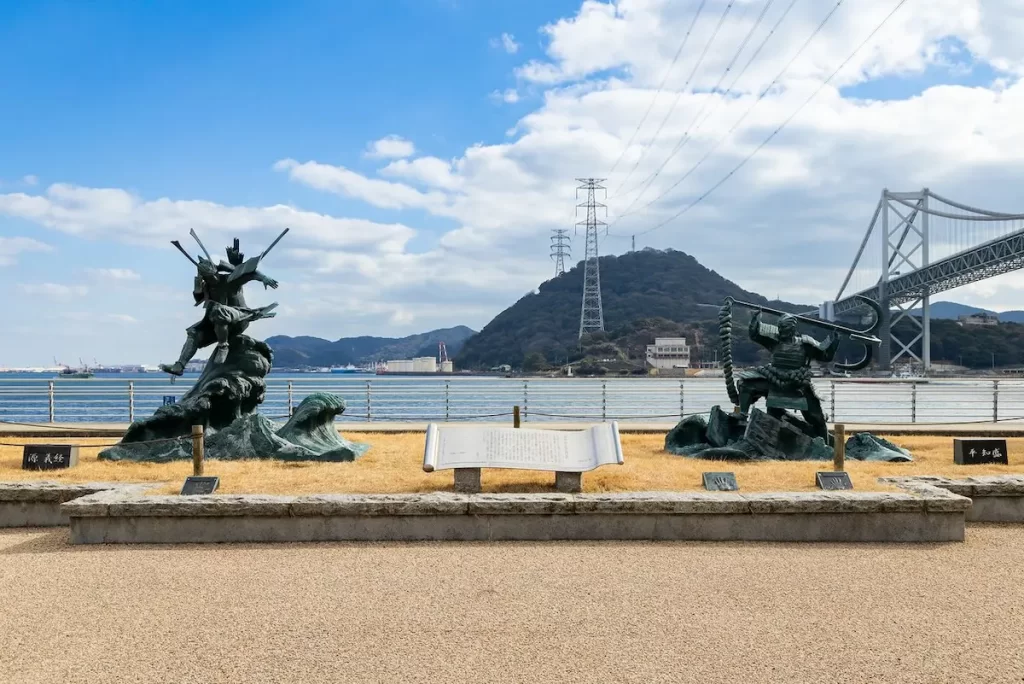
Aftermath of Genpei War
The conclusion of the Genpei War ushered in a transformative era in Japanese history, marked by significant political, social, and cultural changes.
Establishment of the Kamakura Shogunate
The most significant outcome was the establishment of the Kamakura shogunate under Minamoto no Yoritomo. This marked the beginning of shogunal rule in Japan, a system that would last until the 19th century. Yoritomo’s ascension represented a shift from court aristocracy to military governance.
Decline of the Taira Clan
The Taira clan’s defeat led to their near obliteration from the political scene. Surviving members either assimilated into other clans or lived in obscurity. The downfall of the Taira marked the end of their dominance in Japanese politics.
Political Reorganization
Yoritomo implemented a new political structure. He established the position of shōgun and reorganized the government to centralize power in Kamakura, effectively reducing the emperor’s role to a ceremonial one. This reorganization laid the foundation for Japan’s feudal system.
Land and Title Redistributions
In the aftermath, the victorious Minamoto clan redistributed lands and titles. Loyalists to the Minamoto cause, including warriors and monastic institutions that supported them, were rewarded with lands and positions, thereby consolidating Yoritomo’s power base.
Cultural Impact
The war had a lasting cultural impact, inspiring epic tales like the “Tale of the Heike,” which chronicled the rise and fall of the Taira. These tales became a part of Japan’s literary heritage, influencing art, theater, and literature for centuries.
Rise of the Warrior Class
The Genpei War marked the rise of the samurai class in Japanese society. Their skills, loyalty, and martial virtues became highly valued, setting the stage for the samurai-dominated culture that would characterize much of Japan’s subsequent history.
Long-term Societal Changes
The aftermath of the war saw long-term societal changes, with a gradual shift from aristocratic to militaristic values. The samurai ethos, emphasizing loyalty, honor, and martial prowess, began to permeate Japanese society.
Frequently Asked Questions
What was the Genpei War about?
The Genpei War was a national civil war in Japan, fought between the Taira and Minamoto clans. It revolved around control over the imperial court and Japan’s political power.
When did the Genpei War occur?
The Genpei War occurred from 1180 to 1185.
What were the causes of the Genpei War?
The Genpei War was fueled by increasing power struggles within the imperial court. Additionally, the Taira clan’s dominance and perceived tyranny, alongside the Minamoto clan’s quest for political influence and retribution, were key factors.
Who won the Genpei War?
The Minamoto clan won the Genpei War.
What was the impact of the Genpei War on Japanese history?
The Genpei War led to the establishment of the Kamakura shogunate. This era saw the rise of the samurai class and a pivotal shift from aristocratic to military rule, thus defining Japan’s feudal era.
Further Readings
- The Samurai: A Military History by Stephen Turnbull
- The Cambridge History of Japan: Volume 2 (Heian Japan)
- The Samurai Sourcebook by Stephen Turnbull
- A Concise History of Japan by Brett L. Walker

